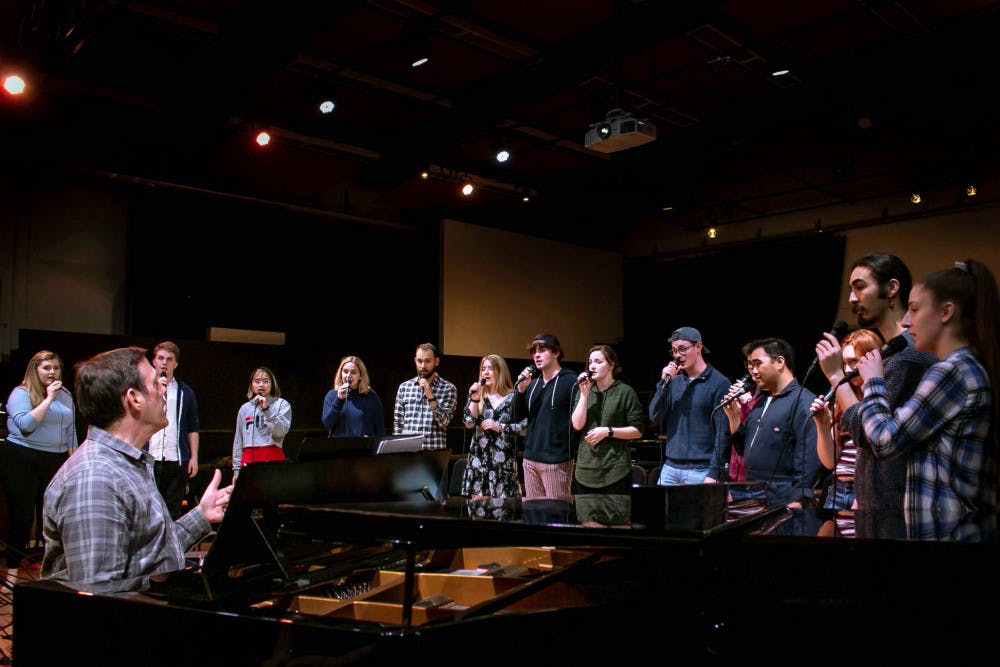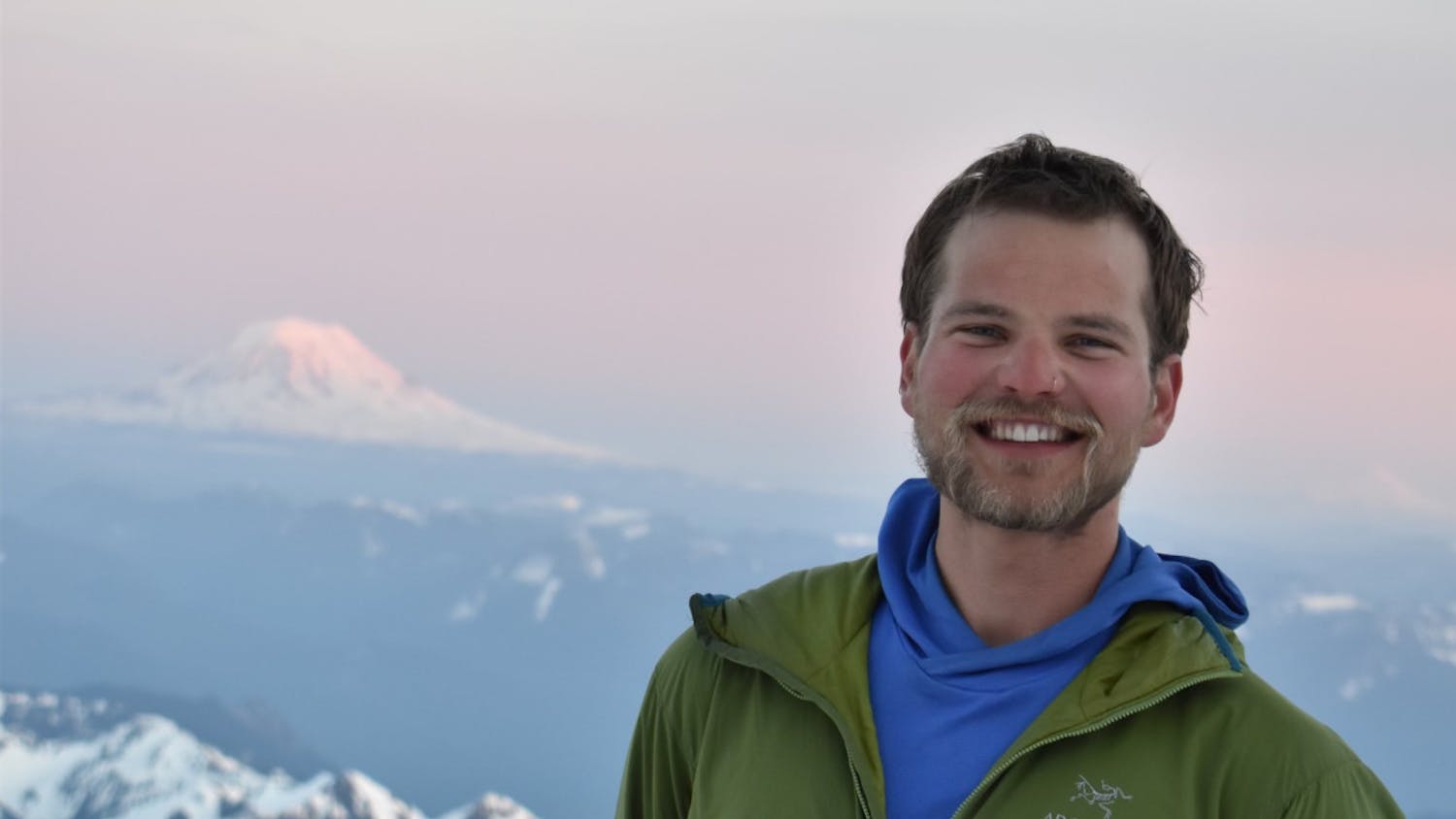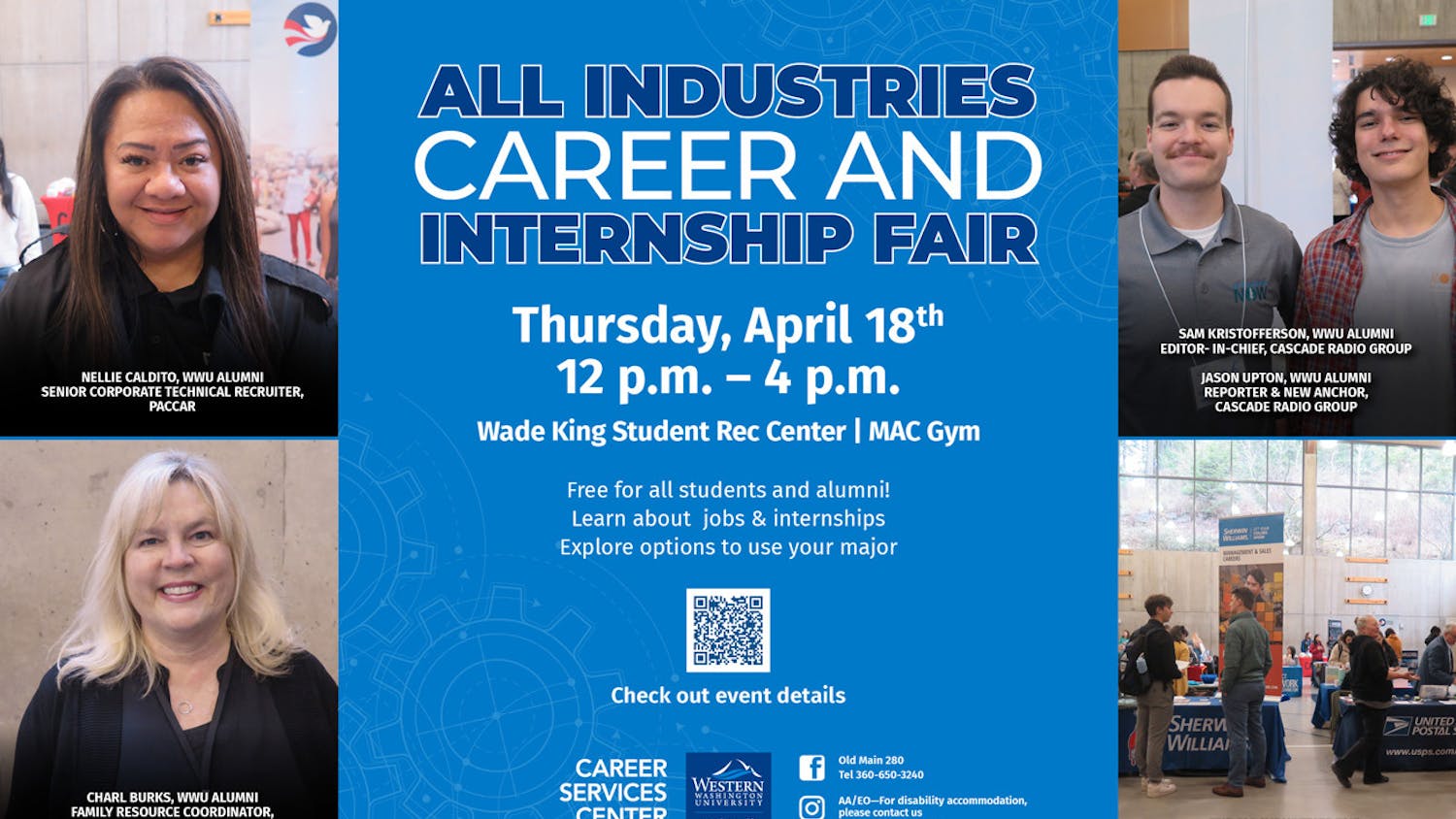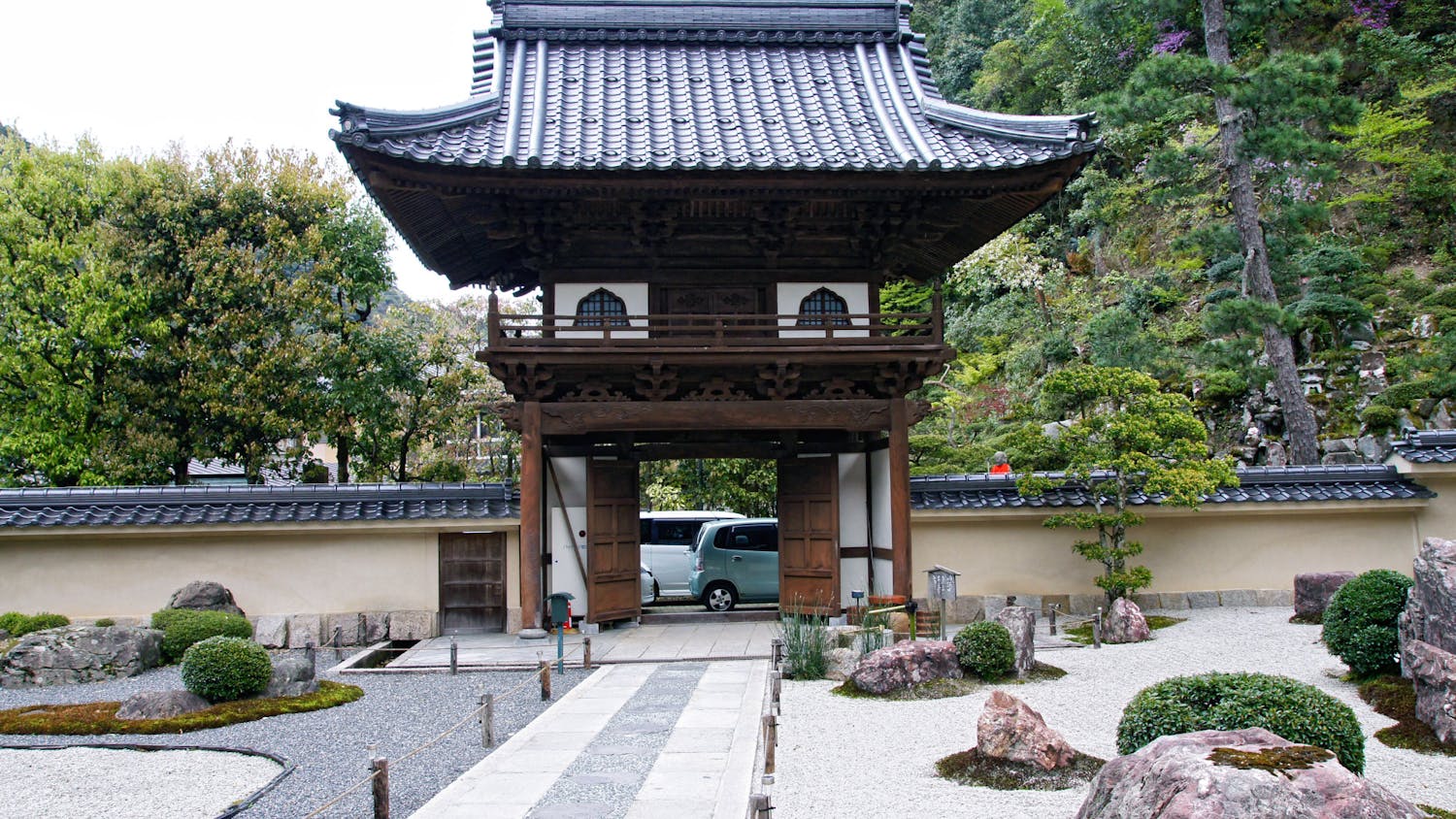
After a 15 year hiatus, The WWU Vocal Jazz Ensemble has been reestablished at Western, and will perform Sunday, March 8, at 3 p.m. in the Performing Arts Concert Hall. The ensemble, which includes both performing arts students and students from other departments, allows its members to have an experience drastically different from a traditional choir.
Tim Fitzpatrick, director of choral activities at Western, said the function of the class is to provide students with an opportunity to sing the vocal jazz idiom in an intimate setting of only 15 students. This umbrella term covers music all the way from early swing styles of the 1930s to contemporary pop music.
Opening its doors to non-majors allows students with a passion for vocal jazz, who may have been involved with choir in high school, to continue singing while accumulating credits. The variety of students provides a more relaxed atmosphere, Fitzpatrick said.
“I really enjoy the environment because it’s lighter, and the students tend to bond with each other quicker,” Fitzpatrick said. “We’re also dealing with a different style of music, so we’re involved in a different way emotionally.”
Each student in the choir uses a microphone while performing. The small group, paired with individually amplified vocals, allows for a more intimate experience, third-year Western student in the vocal group Leah Keaton said. “We’re all able to hold our own sound in the jazz choir, while in traditional one, we all blend together.”
With everyone on individual microphones, the listener is able to distinguish everyone’s unique sound and color, graduate student Jesse Floyd said. Floyd, who mostly focuses on classical choir, said the transition to jazz is similar to switching to a new instrument.
In addition to learning technical skills with a microphone, students are also encouraged to experiment with improvisational techniques such as scating. Scating is a technique that attempts to emulate the sound of an instrument by using one’s voice, which requires “an immense amount of both theoretical knowledge of the music and an ability to feel the music,” Floyd said. “The best way to learn jazz improv is to listen to the great artists who’ve generated this tradition: Charlie Parker, Ella FitzGerald, Charles Mingus.”
Keaton, glowing with enthusiasm as she spoke about her love for jazz, said, “When I become a teacher down the line, I know I’ll teach jazz because it’s just something I’m very, very passionate about. It just speaks to me more than any other type of music. It’s what I grew up listening to.”
Both Keaton and Floyd are excited to perform a piece titled “Leaving Again/In the Wee Small Hours” during the concert in March. Keaton said the ballad’s ethereal-sounding chords paired with its emotional climaxes allow for a powerful experience. The piece embodies what she loves about vocal jazz, making her light up on the inside when she sings.
Floyd said jazz has an inherent capacity to speak to an audience and draw out emotion. “It’s a style of music that’s so ingrained in us as Americans. We can look back at its origins of Black creators and artists, and it’s easy to see that jazz has impacted all of the music we listen to today in a profound way.”





